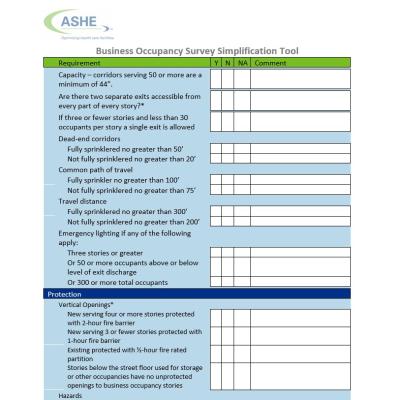Business Occupancy Survey Simplification Tool

Are your business occupancies ready for survey? As of July 1, 2022, the Joint Commission has a total of 29 elements of performance that will be used to survey business occupancies, which provides a useful reference for how other accreditation organizations may define their own processes. The key to a successful survey will be providing critical building information.
ASHE members can access this tool that will help in conducting a self-assessment based on the Joint Commission’s standards and determining current level of compliance.
| Download Tool | Members download this tool. Click here to join ASHE! |
| View Related Education | Explore the Physical Environment Survey Readiness Program In-Person and Live Online options. |
| Read article | Check out the related HFM magazine article, "Preparing business occupancies for accreditation surveys." |
ASHE authorizes the copy, use and customization of this template, by health care facilities for non-commercial use only. In consideration of this authorization, the user agrees that any copy of this document which the user makes shall retain all copyright and other proprietary notices that may be contained therein. ASHE accepts no responsibility or liability for the accuracy or the completeness of the information in this document.
